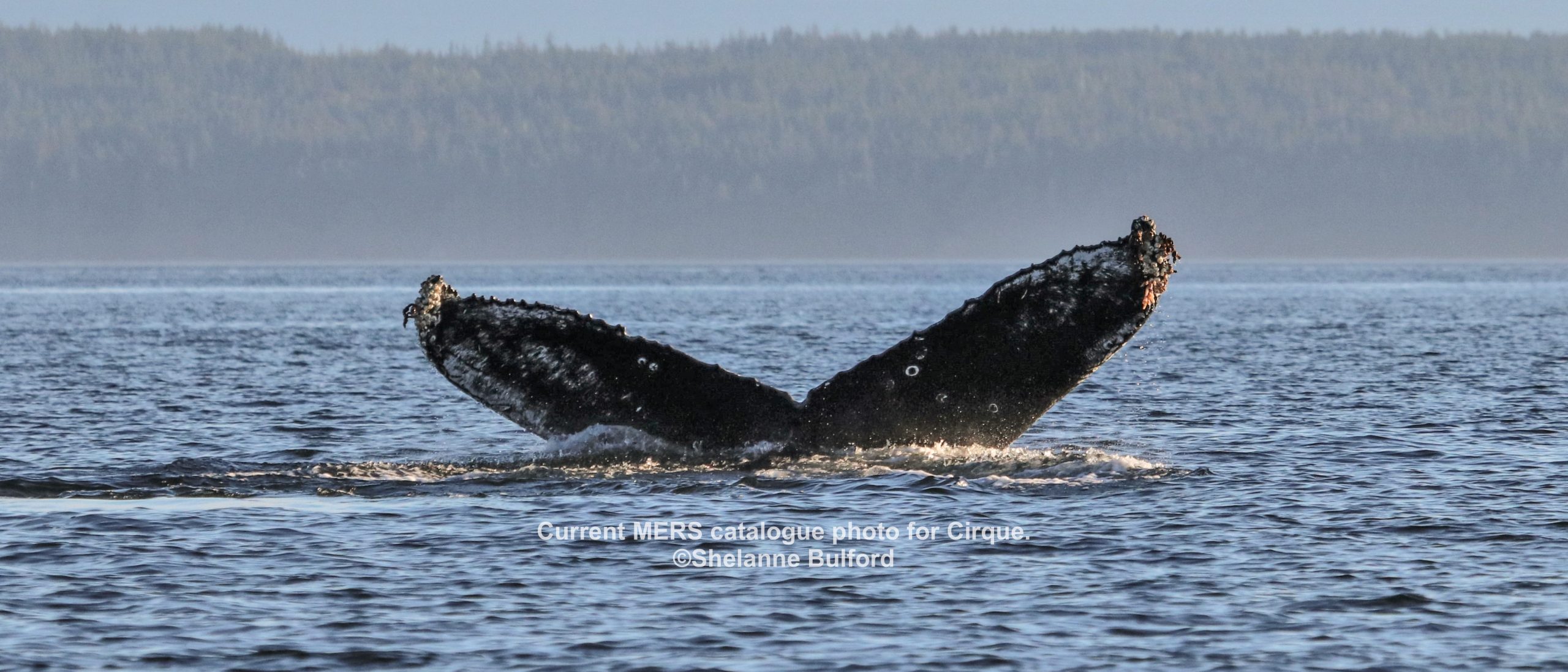
April 17, 2024
Whale Mystery Solved – Cirque
Whale ID mystery SOLVED!Confirmed after 7 years – Cirque IS Glacier’s calf! How this unfolded: On January 11th, 2017, friend of…
MERS Marine Education & Research Society
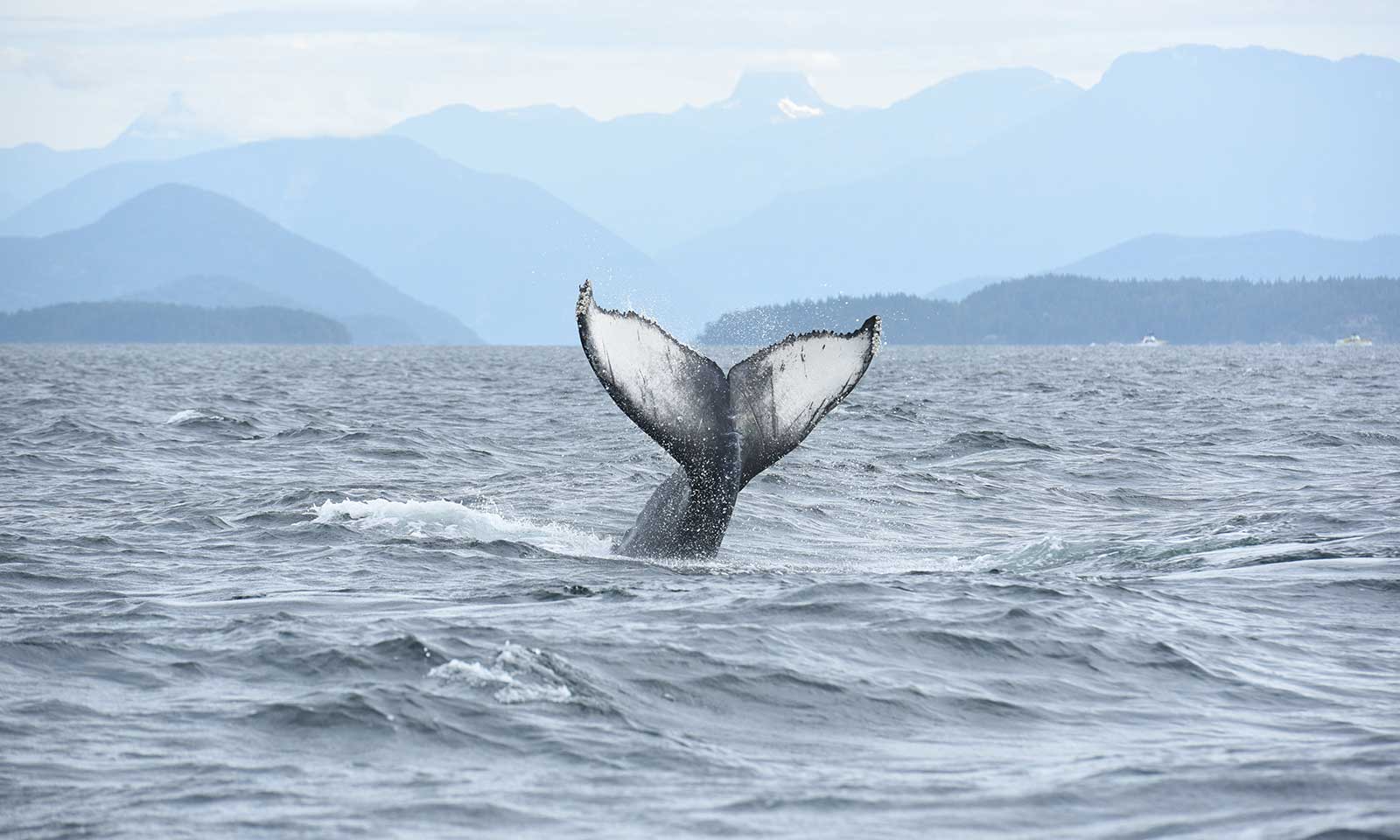
Splashy, Nick’s 2020 calf ©MERS, MML-42
Knowing who the whales are
Being able to recognize whales as individuals is the foundation of almost all our research to reduce threats. We need to know who Humpback Whales are to learn about their life histories (e.g. when they have their 1st calf), habitat use, feeding strategies, migration patterns, social associations, and impacts of threats like entanglement and vessel strike.
Our research on individual Minke Whales around northeastern Vancouver Island led to knowing there are not many Minkes. Rather, the same few are sighted again and again, year after year. Minke Whales are identified as individuals by their dorsal fins and distinctive features on their flanks.
The easiest way to recognize an individual Humpback Whale is by the pigmentation and trailing edge of their fluke (the underside of their tail). Because Humpbacks do not always lift their tails, we also identify them by the shape and markings of their dorsal fins. Many of the whales have scars from entanglement and/or collision. We study these survivors to better understand how significant these threats are to Humpbacks.
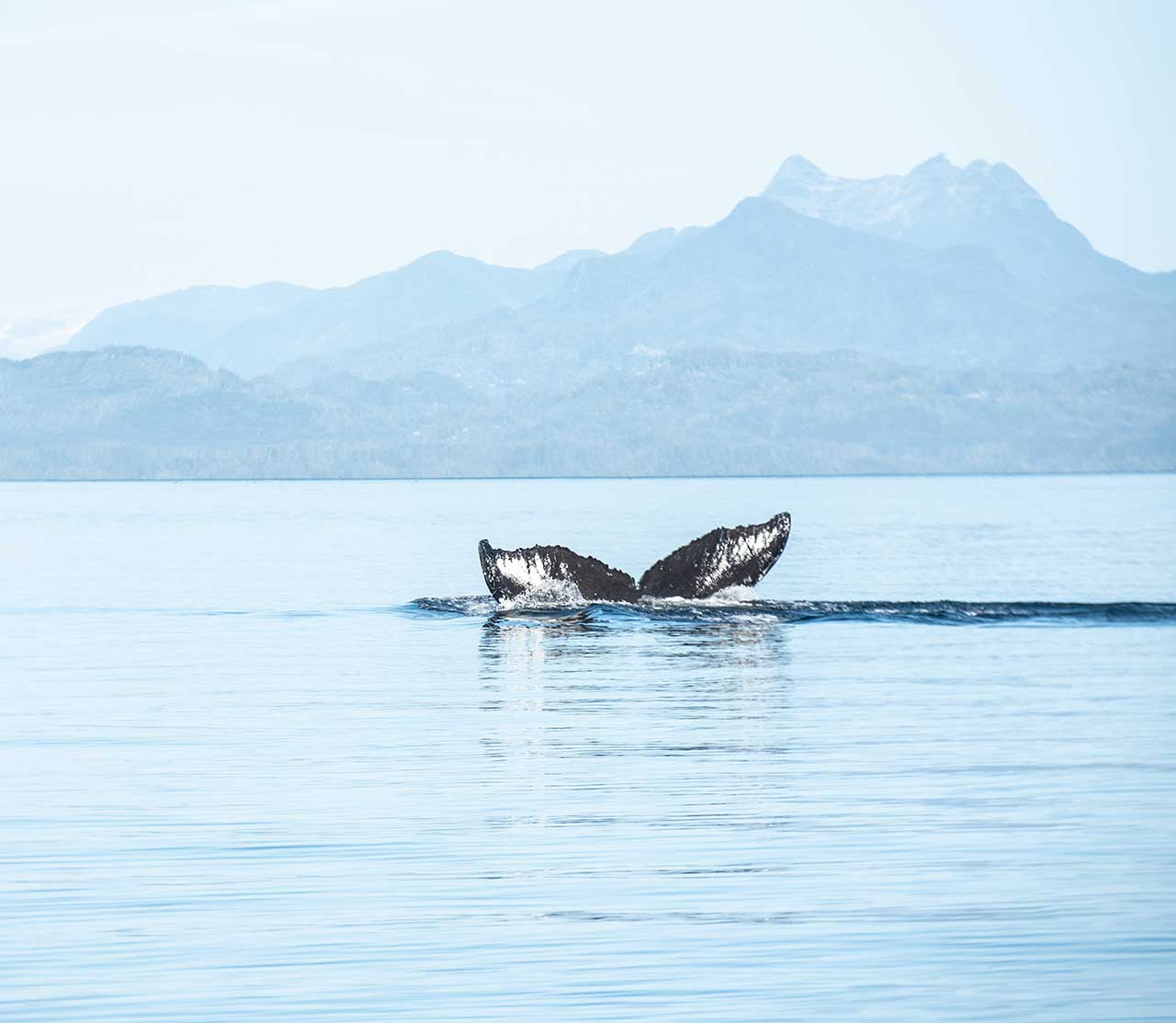
Argonaut (BCY0729) ©MERS, MML-57
Some Humpbacks have learned a new feeding strategy where it is difficult to see their flukes or dorsal fins. Therefore, we also identify Humpbacks by markings on their mouths. Conger and Moonstar were the first Humpbacks we documented using the feeding strategy we call “trap-feeding”. In the photos below, you can see that the white markings on their jaws are distinct.
Trap-feeding is what some Humpbacks do under very specific conditions - when juvenile Herring is not concentrated and there are diving birds pursuing the fish. The whales hang at the surface with their jaws wide open and the fish may enter this trap when trying to get away from the birds.
When a new Humpback is documented, we assign an alphanumeric name. The convention is that this includes an X, Y, or Z to indicate how much white is on the fluke. X = less than 20% white. Y = 20 to 80% white. Z = more than 80% white. We also assign nicknames for distinctive markings on the Humpbacks’ flukes or dorsal fins. This is to aid recognition of the whales and to create greater public engagement and therefore, greater potential to reduce threats.
Example: BCY0728 is “Conger” because he has a marking in the shape of an eel on his fluke. BCY0728 indicates he is the 728th Humpback documented in British Columbia whose tail is 20 to 80% white. In British Columbia, efforts to catalogue Humpbacks are unified under the Canadian Pacific Humpback Collaboration (CPHC) which we coordinate.
We conduct year-round line transect surveys to document whales, dolphins, porpoises and Sea Otters in our core study area off northeastern Vancouver Island. These monthly, systematic surveys provide data to better understand trends of seasonal abundance, distribution, and habitat use. The intent is that this research contributes to recovery planning for species at risk, threat mitigation, and habitat assessment.
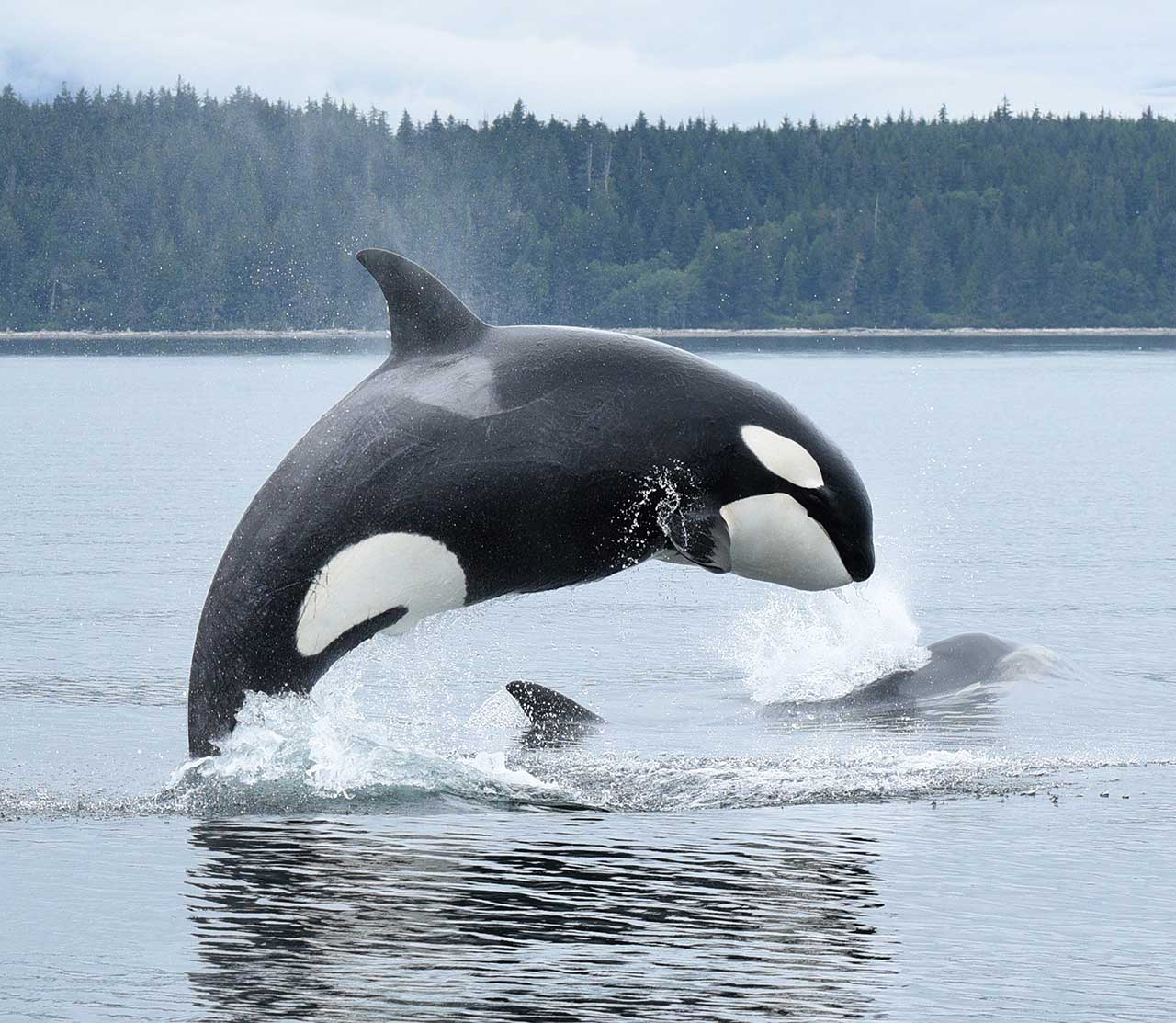
Breaching Northern Resident Killer Whale, ©MERS, MML-42
We expand our reach through building community. Join us! There are many ways you can get involved. Participate in events. Help educate. Become a donor. Contribute data. Use the Whale Warning Flag and model best boating practices around the whales. Sponsor a Humpback Whale. Purchase sustainable goods from the Ocean Store.
Join us to help the whales and the ocean they depend on.
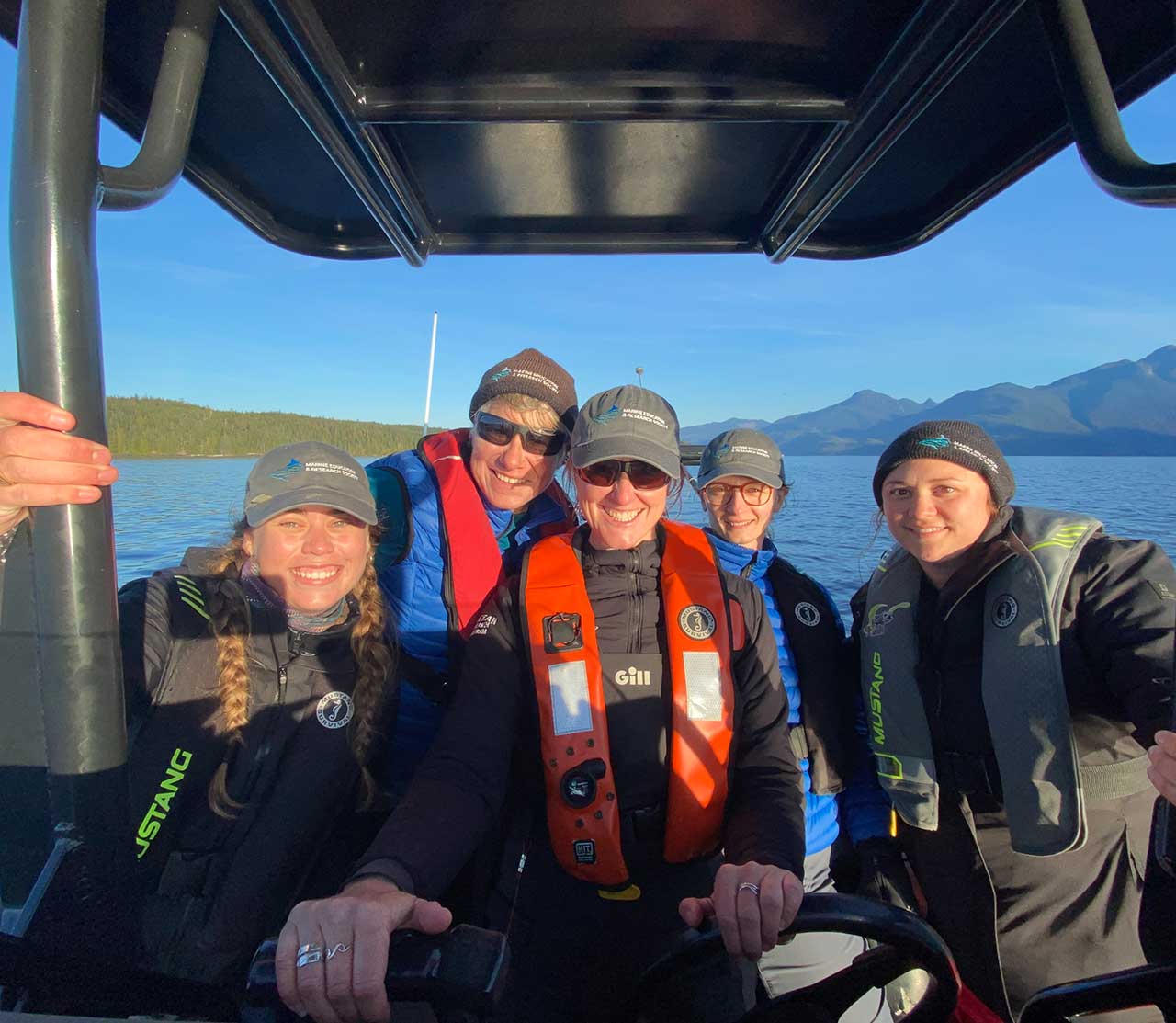

April 17, 2024
Whale ID mystery SOLVED!Confirmed after 7 years – Cirque IS Glacier’s calf! How this unfolded: On January 11th, 2017, friend of…

May 25, 2022
Inukshuk is back. We saw him back for the first time this year in the feeding grounds near northeastern Vancouver Island…

April 27, 2020
Here’s the kind of thing that makes Humpback researchers’ hearts go pitter pat and AGAIN makes the point of how many…